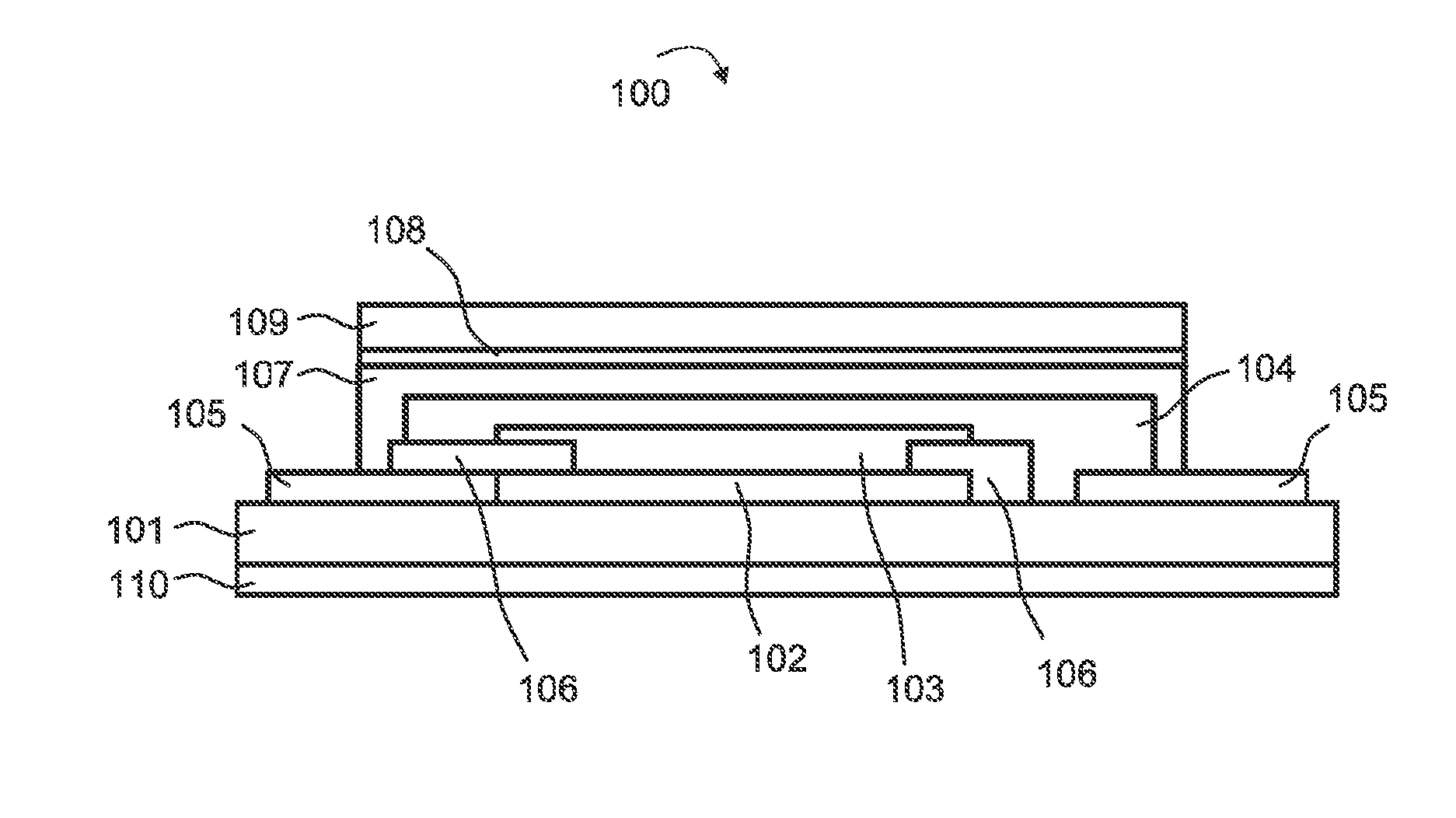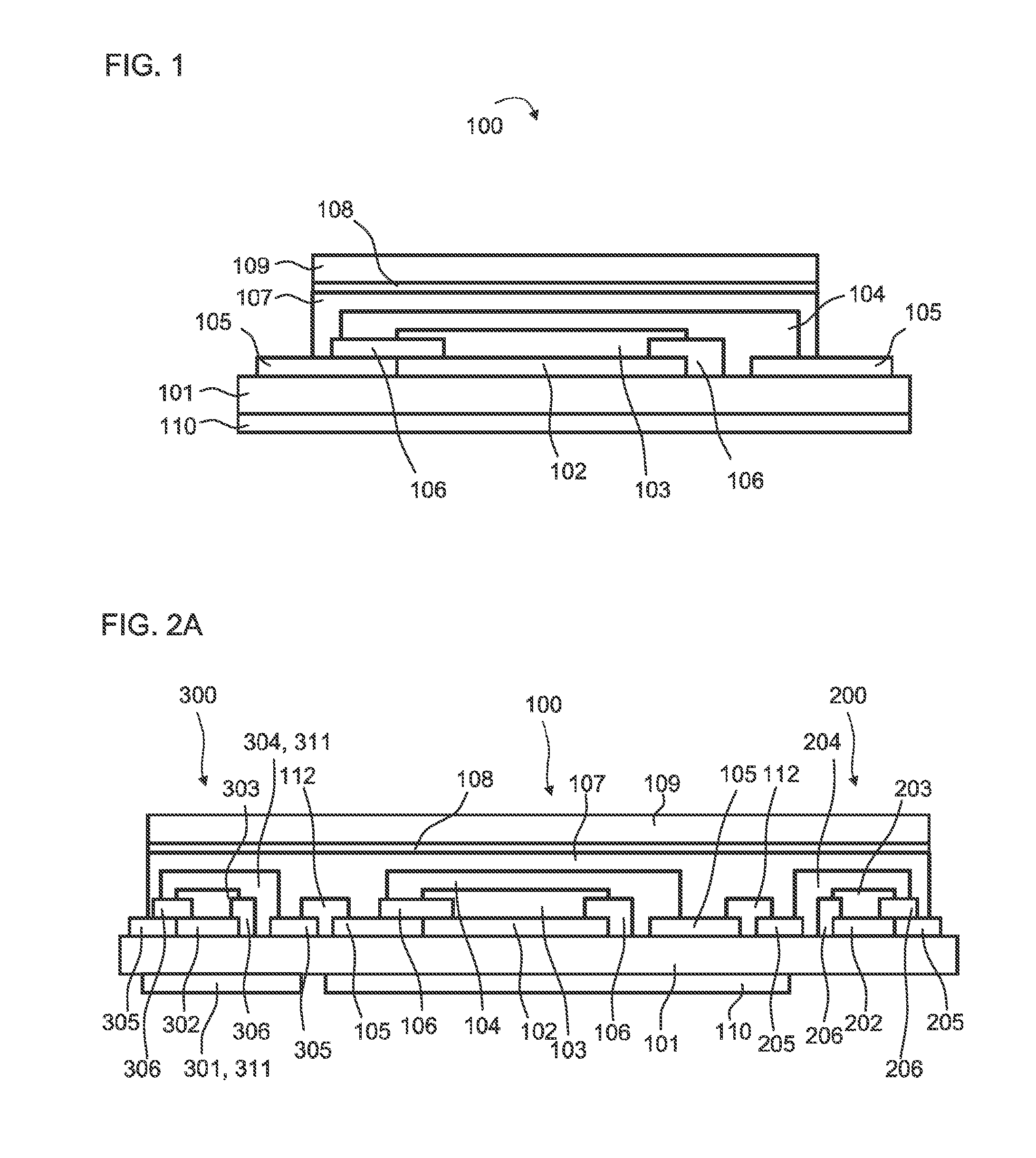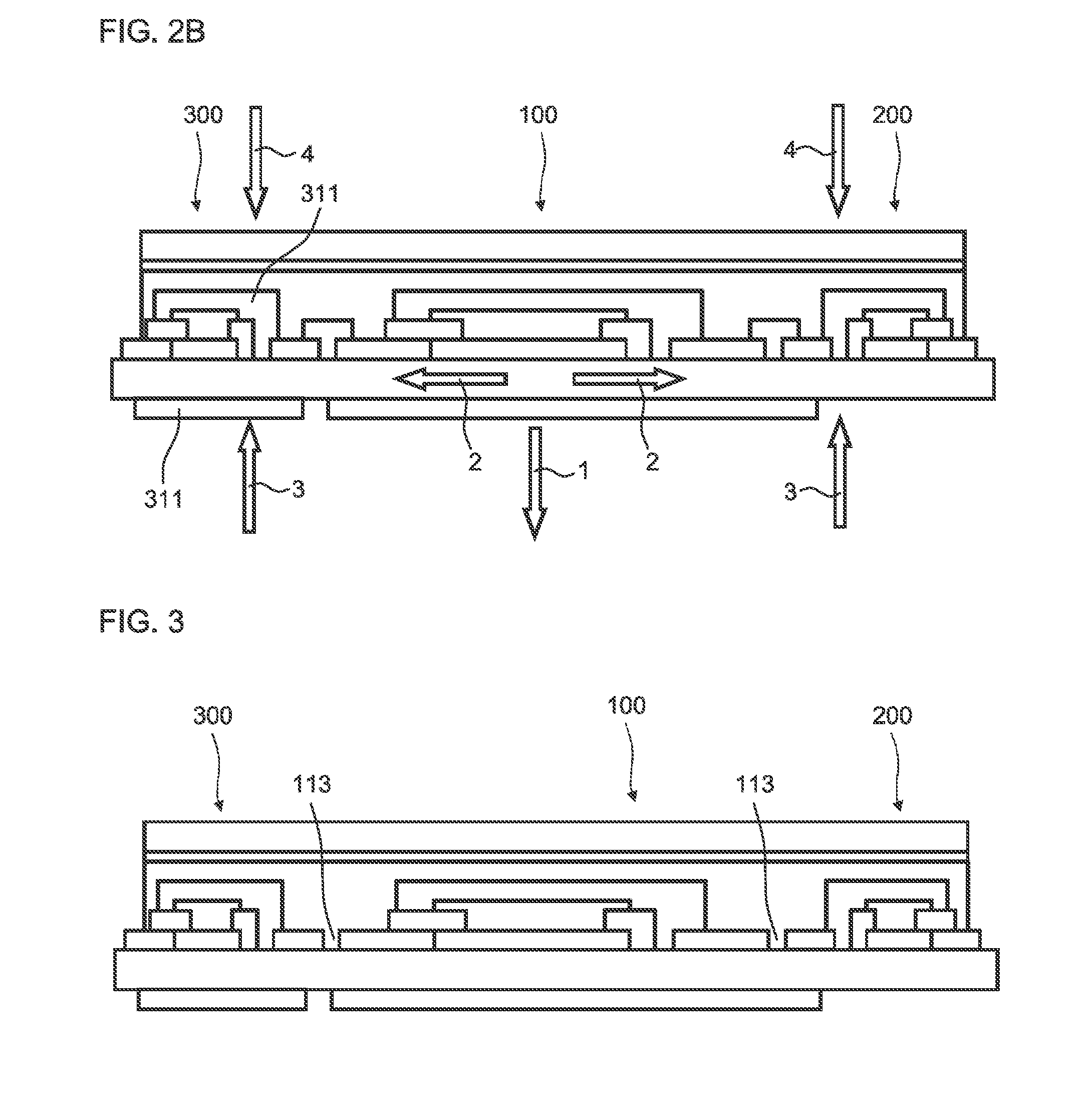Organic Optoelectronic Component and Method for Operating the Organic Optoelectronic Component
a technology of optoelectronic components and organic materials, applied in the direction of electroluminescent light sources, basic electric elements, thermoelectric devices, etc., can solve the problems of reducing luminance, requiring a high complexity, damage to organic materials, etc., and achieve low complexity, less load, and circuitry outlay
- Summary
- Abstract
- Description
- Claims
- Application Information
AI Technical Summary
Benefits of technology
Problems solved by technology
Method used
Image
Examples
Embodiment Construction
[0070]FIG. 1 shows, in accordance with one exemplary embodiment, the basic construction of an organic light emitting element 100 embodied as an organic light emitting diode (OLED).
[0071]The organic light emitting element 100, which may also be designated as OLED 100 hereinafter, comprises a substrate 101, on which an organic functional layer stack 103 having at least one organic light emitting layer is arranged between electrodes 102 and 104. At least one of the electrodes 102, 104 is embodied as transparent, such that light generated in the organic functional layer stack 103 during the operation of the OLED 100 can be radiated through the at least one transparent electrode.
[0072]In the OLED 100 shown in FIG. 1, the substrate 101 is embodied as transparent, for example, in the form of a glass plate or glass layer. As an alternative thereto, the substrate 101 can, for example, also comprise a transparent plastic or a glass-plastic laminate.
[0073]The electrode 102 applied on the subst...
PUM
 Login to View More
Login to View More Abstract
Description
Claims
Application Information
 Login to View More
Login to View More - R&D
- Intellectual Property
- Life Sciences
- Materials
- Tech Scout
- Unparalleled Data Quality
- Higher Quality Content
- 60% Fewer Hallucinations
Browse by: Latest US Patents, China's latest patents, Technical Efficacy Thesaurus, Application Domain, Technology Topic, Popular Technical Reports.
© 2025 PatSnap. All rights reserved.Legal|Privacy policy|Modern Slavery Act Transparency Statement|Sitemap|About US| Contact US: help@patsnap.com



